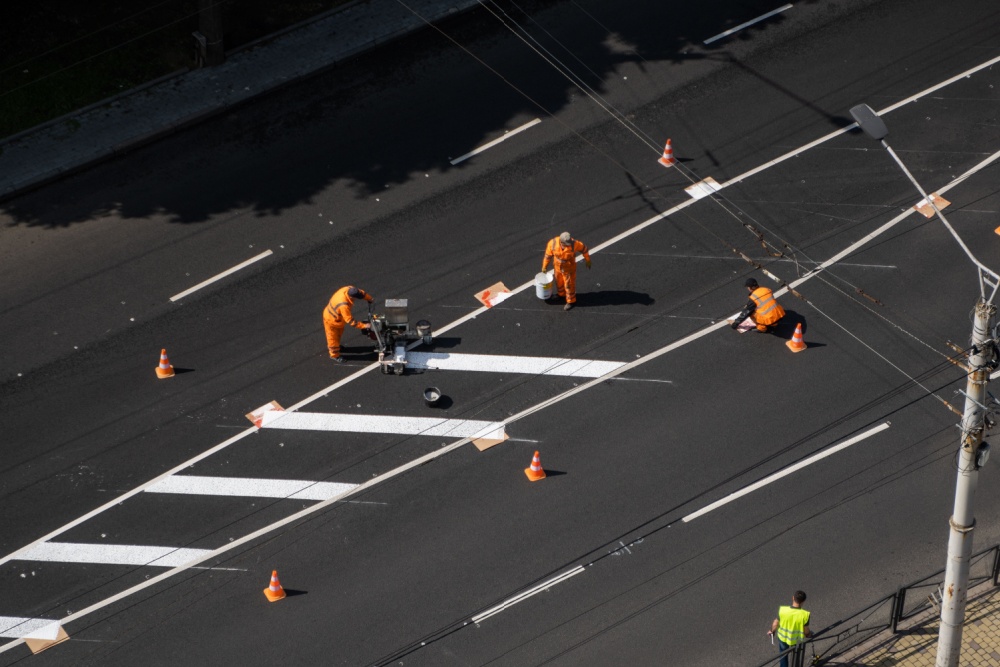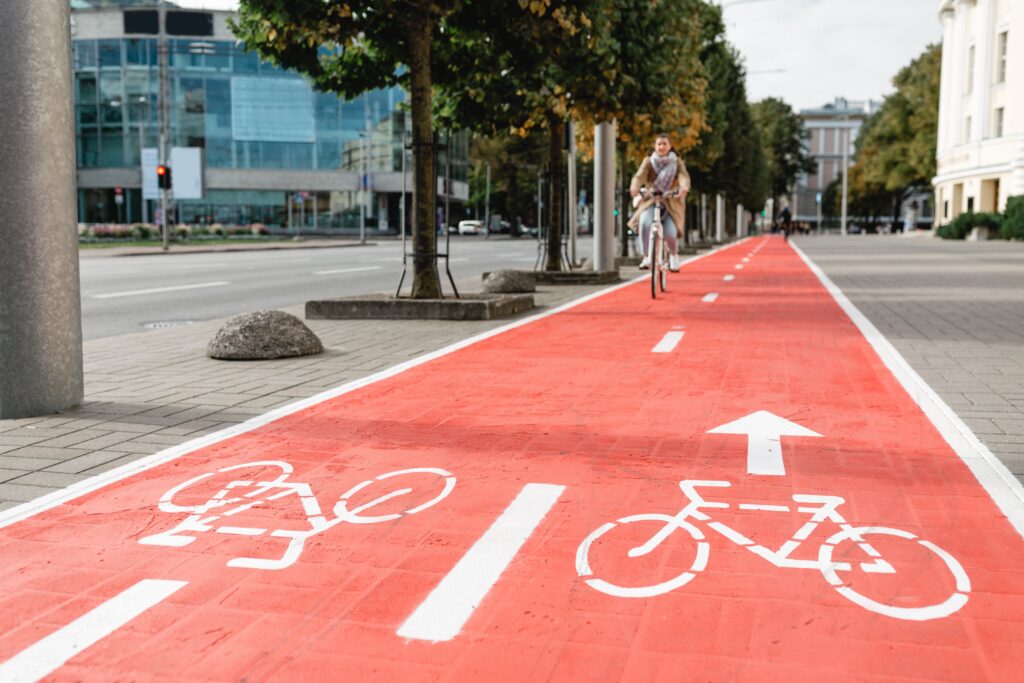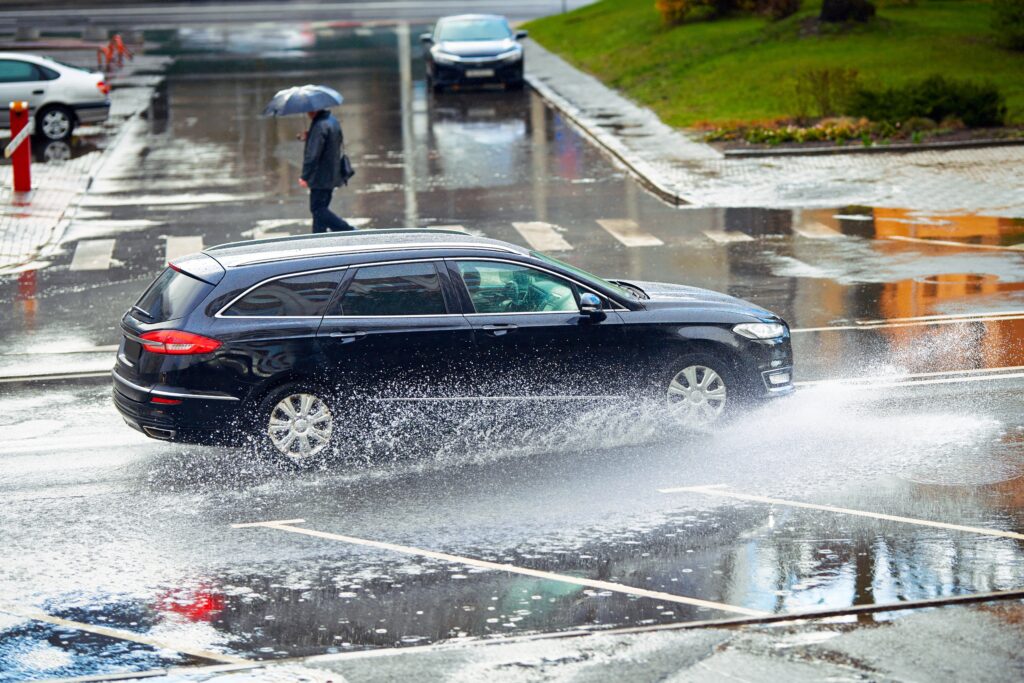When we think of road safety, we often picture traffic lights, road signs, and well-paved highways. But one of the most important yet often overlooked elements of safe and efficient roads is right under our tires: road markings.
Road markings are more than just paint on pavement. They are an essential component of our traffic management system, providing real-time guidance, ensuring safe navigation, and organizing road use. No matter your role in traffic, road markings are key to keeping the roads safe for everyone. Without these markings, even the most advanced road networks would fail to work.
One of the most important roles road markings play is clearly defining vehicle and pedestrian zones. Road markings prevent dangerous overlaps and keep all road users within their lane for everyone’s safety. With the growing number of cars on the road and road networks getting wider, the need for clear road markings is more important than ever.
The Meaning of Road Markings in the Philippines
If you’ve been on the road as a commuter, driver, or motorist, then you must already know that road markings do more than just serve aesthetics. Road markings play an important role in controlling traffic.
According to the Land Transportation Office (LTO) of the Philippines, pavement markings provide drivers with crucial information about lane use, right-of-way rules, and road alignment. These markings are not optional. They are required by law and are vital for maintaining order, safety, and predictability on the road.
There are a few different categories for road markings and signs in road safety:
Longitudinal Markings
These are the lines that run in the same direction as traffic. They help keep vehicles in their lanes, show where overtaking is allowed or prohibited, and define the edge of the road. Think of the center line separating two-way traffic, the dashed lines that let you know it’s safe to change lanes, and the solid lines at the road’s edge that help you stay on track, especially during low visibility.

Transverse Markings
These lines go across the road and usually signal drivers to stop, slow down, or yield. They’re especially useful at intersections and pedestrian-heavy areas. Common examples include wide zebra stripes for pedestrian crossings, solid stop lines before traffic lights or intersections, and triangular yield lines that warn drivers to give way.
Other Markings
These include the various symbols and words you’ll see painted on the road like arrows showing which way to turn, bike lane icons, and text that says “SLOW” or “SCHOOL ZONE.” These markings give drivers quick, clear information without needing to read signs or guess what’s coming up.
Each type of marking does its part in encouraging safer, more predictable driving behavior, especially in places where traffic is heavy or accidents are more likely. They act as everyday visual reminders, working side by side with signs to help people understand how to use the road. As roads get busier and more complex, having clear and consistent markings becomes more important than ever.
Guiding Traffic with Clarity
Imagine driving at night on a poorly marked road. Without the presence of clear lane lines or reflective paint, navigating curves, intersections, or multi-lane roads becomes a dangerous guessing game. The result? Slower traffic, erratic driving behavior, and increased risk of collisions.
What purpose do pavement markings serve? Well, effective road safety markings should act like a silent traffic cop. Ideally, they should guide drivers, cyclists, and pedestrians by clearly indicating where to go, where to stop, and how to stay safe. For instance:
· Solid white lines signal that lane changing is discouraged or prohibited.
· Broken white lines mean you can change lanes when it’s safe to do so.
· Double yellow lines indicate no overtaking from either direction.
· Solid yellow lines separate traffic moving in opposite directions and also indicate no passing or overtaking in certain conditions.
· Edge lines mark the boundaries of the driving lane and help drivers stay on the road, especially in low visibility conditions.
· Zebra stripe crosswalks consist of bold white stripes across the road, alerting drivers to pedestrian right-of-way and encouraging slower speeds near intersections and school zones.
· Bicycle lane markings are often outlined with white lines and include a painted bicycle symbol, designating safe and exclusive areas for cyclists and reducing conflicts with motor vehicles.
Road markings are important in areas with limited signage or high volumes of tourists unfamiliar with local driving rules. Markings can bridge language barriers and reinforce traffic rules in real-time. They also support driver confidence, helping motorists make quick and accurate decisions that can keep roads safer and traffic flowing smoother.

Enhancing Safety and Reducing Accidents
Numerous studies have shown that well-maintained road markings reduce accidents by reinforcing proper driver behavior. In high-risk areas like intersections, pedestrian crossings, and highways, road markings provide critical information to road users faster than road signs.
Markings are especially important for older drivers who rely more on visual cues. High-quality paint and proper layout significantly improve visibility in low-light and adverse weather conditions, which reduces the chances of collisions.
In rural areas or newly built roads, where street lighting is limited, retroreflective thermoplastic markings can make the difference between a safe journey and a fatal crash. These materials bounce back light from vehicle headlights, improving nighttime visibility.
Consistent use of markings also has a psychological effect on drivers. These markings reinforce lane discipline and promote defensive driving behavior. In urban settings, these cues help reduce speeding and erratic lane changes, ultimately protecting both motorists and pedestrians.
Supporting Sustainable and Smart Infrastructure
As cities across the globe try to become smarter and more sustainable, road markings play an unsung role in modern infrastructure. Consistent, high-quality markings can:
· Improve traffic flow, reducing congestion and fuel consumption.
· Support multimodal transport, such as bicycle lanes and dedicated bus lanes.
· Enable smart systems, including automated driving technologies that rely on lane markings for navigation.
Properly marked roads reduce the wear and tear on vehicles by guiding them smoothly through curves, turns, and inclines. This not only benefits individual drivers but also lowers maintenance costs for government and private road owners.
Additionally, maintaining these markings regularly ensures that roads remain compliant with local and international safety standards, a critical factor for public infrastructure investments.
Visibility and Durability: What Makes Road Markings Effective?
Road markings only work if people can actually see them. That’s why it’s so important to use materials that are not only highly visible but also built to last. In a tropical country like the Philippines, markings deal with a lot from pouring rain to blistering heat, along with the daily beating from thousands of vehicles passing through.
Here are just some of the challenges road markings face:
· Heavy rain and flooding
· Harsh sunlight and UV exposure
· Constant tire wear from traffic
· Busy roads with high daily vehicle flow
Choosing the right materials, such as thermoplastic road marking paint, is crucial for ensuring longevity and effectiveness. If a marking fades just months after it’s applied, it can confuse drivers, reduce safety, and cost more in the long run because of frequent touch-ups.
Reflective properties are also key. Paints that use glass beads or similar materials help markings shine under headlights at night, making roads safer for both drivers and pedestrians. This is especially important on highways and roads without street lighting.
How the markings are applied matters too. A good application process that uses the right heat, prepping the surface, and allowing proper drying time can make a big difference in how long the markings hold up.

Maintenance: An Often-Overlooked Lifeline
Even the best materials need some upkeep. Over time, markings will wear down, especially in busy areas. Cracks, fading paint, and worn lines make roads harder to navigate, raising the risk of accidents.
That’s why regular maintenance is a must. Government units and contractors should plan for routine checks to spot wear and tear and know when it’s time to repaint. Including this in your initial project budget helps keep roads safer for longer and avoids unexpected repair costs.
At Rua Seguridad, we recommend checking and refreshing road markings every 6 to 12 months depending on how much traffic they get and local weather conditions.
Using newer tools and materials—like long-lasting additives or machines that apply markings more evenly—can help make the job faster and more consistent. This approach saves money in the long run and helps keep everyone on the road safer.
Road Safety Challenges in the Philippines
The Philippines faces unique road safety challenges, from the volume of mixed-use traffic to rapidly expanding urban zones. Tricycles, motorcycles, delivery vans, and buses often share the same road, which is why clearly marked traffic lanes and intersections are critical.
Compounding the issue is the country’s extreme weather. The Philippines experiences tropical rains and flooding primarily from June to November, during the southwest monsoon and typhoon season. These weather conditions can quickly wear down poor-quality road markings and make roads slippery and difficult to navigate.
Moreover, extreme heat during the dry season from March to May can soften asphalt surfaces and degrade substandard marking materials, reducing their adhesion and visibility. These challenges emphasize the need for durable, climate-resilient road marking solutions.
As traffic volumes grow and infrastructure ages, the importance of investing in high-performance materials becomes even more apparent. Clear markings that can withstand climate extremes are essential in building reliable transport systems across provinces and islands.

Rua Seguridad, Presenting A Clear Path to Safer Roads
Road markings are not just lines on the pavement. They can save lives. From guiding everyday traffic to reducing fatal crashes, these important infrastructure elements are essential to modern development.
In countries like the Philippines that are undergoing rapid growth, traffic congestion and road safety continue to be a challenge, which is why using high-quality road paints for road markings should be non-negotiable.
If you’re looking for a road paint supplier in the Philippines that has specialized formulations for the country’s weather, Rua Seguridad can help.
Our road marking paints are engineered for tropical durability, high visibility, and long-lasting performance that meets DPWH and LGU standards. We’ve partnered with contractors, government agencies, and private developers to deliver solutions that work in real-world conditions.
Partner with Rua Seguridad to start building better roads.



